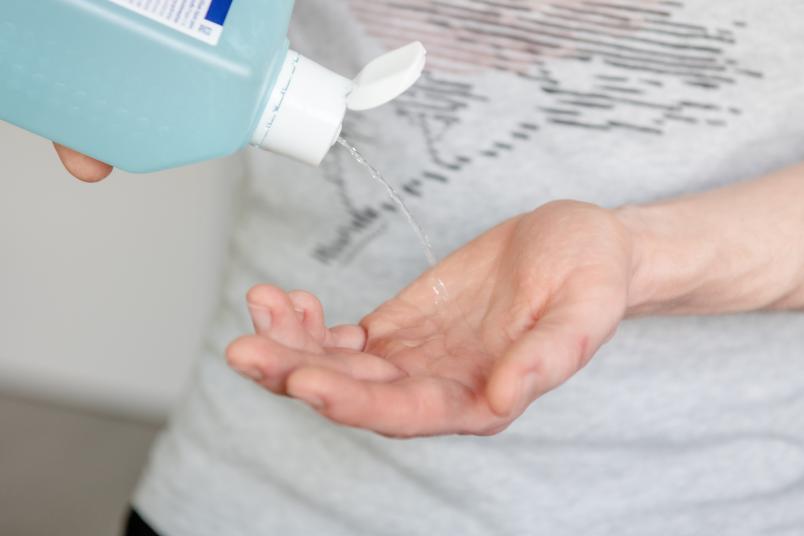
Virology
Hard to break down
Hepatitis E virus defies alcohol-based hand disinfectants.
The hepatitis E virus (HEV) can cause serious liver inflammation and is the most common cause of acute virus-mediated hepatitis worldwide. Infection can be prevented through appropriate hygiene measures. Scientists from TWINCORE, Centre for Experimental and Clinical Infection Research, the Hannover Medical School (MHH) and the Ruhr Universität Bochum (RUB), together with partners from industry, have investigated the effectiveness of various common hand disinfectants against HEV. They were able to show that most formulations do not completely inactivate the virus. They have now published these results in the Journal of Hepatology from 24 january 2022.
Infection from pork
In Germany and Europe, HEV has its natural reservoir in pigs. The infection can spread from animals to humans, which is called a zoonosis. This often happens through incompletely heated or raw meat products such as minced meat. In tropical regions of the world, infections occur via contaminated water, sometimes causing large outbreaks. "Some of these infections could possibly be prevented with the right hygiene measures," says Dr. Patrick Behrendt, physician in the Department of Gastroenterology, Hepatology and Endocrinology at the MHH and head of the junior research group "Translational Virology" at TWINCORE. This includes, above all, correct hygienic hand disinfection in everyday clinical practice when dealing with hepatitis E patients and infected animals.
Together with the team of Professor Eike Steinmann, head of the Department of Molecular and Medical Virology at RUB, Behrendt has investigated whether common hand disinfectants can render the virus harmless. "We tested the effect of the alcohols ethanol and propanol, both individually and in the mixing ratios recommended by the WHO, and also commercial hand disinfectants," says Steinmann. "However, only one product that contained another component was effective."
Alcohol alone is not effective
Normally, HEV occurs non-enveloped and, like all non-enveloped viruses, is very resistant to chemical influences. However, virus particles circulating in the blood of patients are surrounded by a lipid envelope. "Not all disinfectants are effective against enveloped and non-enveloped viruses at the same time," says Steinmann. "We used both forms of HEV for our tests."
Although some of the disinfectants tested are certified to inactivate both enveloped and non-enveloped viruses, they were not sufficiently effective against HEV. "The alcoholic components dissolve the lipid envelope, but the resulting "naked" viruses are still infectious," says Behrendt. So HEV is literally hard to break down. The decisive advantage was a product that contains phosphoric acid as well as alcohol. This neutralised all the virus particles sufficiently.
"We were able to show that HEV can resist most common hand disinfectants," says Behrendt. "We hope that these findings will be taken into consideration in the future when hygiene measures are recommended for handling contaminated meat products and in HEV outbreak situations."